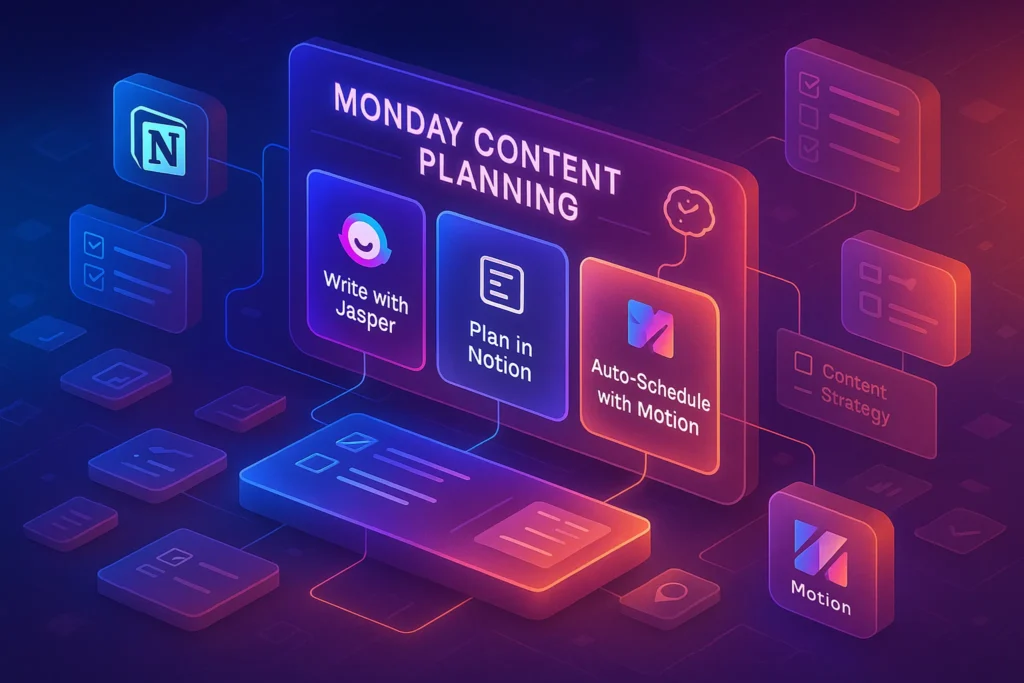🎯 Intro
“Regular content is read—interactive content is experienced.” That one sentence captures the massive shift happening in the digital world. As creators, marketers, or founders, we’ve all felt the challenge of keeping audiences engaged. Blog posts get skimmed, videos get skipped, but a well-designed quiz or calculator? That demands interaction. It transforms passive readers into active participants.
Imagine a health brand creating a “Wellness Score” assessment that helps users evaluate their lifestyle and immediately suggests personalized tips. Or a SaaS company offering an ROI calculator so potential clients can see exactly how much money they could save. This is more than content—it’s an experience that fuels trust, generates data, and encourages action.
💡 Nerd Tip: Engagement today isn’t just about views or clicks—it’s about creating moments where users feel involved.
🔍 Why Interactive Content Matters
Interactive content is no longer a “nice-to-have.” It’s one of the most effective ways to build meaningful relationships with your audience. Research from Demand Metric shows interactive content generates 2x more conversions than static content. Why? Because interaction is personal. When someone takes a quiz, enters numbers into a calculator, or navigates an interactive infographic, they invest energy and attention. That personal investment creates memory, trust, and action.
One of the biggest advantages is lead generation. A quiz asking “What’s your digital marketing persona?” can seamlessly capture an email at the end by offering a personalized report. Calculators, especially ROI or pricing tools, act as direct conversion funnels—users not only see their potential savings but are also more inclined to move forward because they understand the value. Assessments and readiness tests further strengthen brand positioning by educating users while qualifying leads.
Beyond leads, interactive formats enhance brand perception. Instead of feeling like an audience is being sold to, they feel guided, engaged, and even entertained. That emotional shift has long-lasting effects on retention and loyalty. For brands like NerdChips that prioritize future-ready tools and meaningful content, interactive engagement aligns perfectly with the mission to empower creators and teams.
🛠️ Key Interactive Content Types
Let’s break down the main forms of interactive content and why each one matters.
Quizzes are the king of personalization. Whether it’s “Which productivity style are you?” or “What AI tool best matches your workflow?”, quizzes make users feel seen. BuzzFeed built an empire around them, but today, businesses use them strategically to drive leads. According to a 2024 case study, quizzes can increase lead capture rates by 30% compared to static lead magnets.
Calculators turn abstract benefits into tangible numbers. A pricing calculator can show potential clients their monthly cost based on usage. An ROI calculator demonstrates how much money they could save or earn using a specific tool. This isn’t just educational—it removes doubts and makes decision-making easier. For instance, a SaaS with a calculator embedded in its landing page often reports up to 40% more conversions because prospects see instant, personalized value.
Assessments test knowledge or readiness. Think of a “Digital Transformation Readiness Test” for businesses or a “Creator Skills Assessment” for freelancers. These tools provide value by offering insights while quietly segmenting leads for further nurturing.
Interactive Infographics take data visualization a step further. Instead of static graphs, users can hover, click, or input their details to reveal customized outputs. These not only increase time on page but also amplify shareability on social platforms.
💡 Nerd Tip: Before building any interactive tool, ask yourself one key question: Is my goal to capture leads, boost awareness, or keep users longer on my platform? The answer will guide your choice of content type.
⚡ Best Interactive Content Builders (2025)
Choosing the right builder is critical because not all tools are created equal. Let’s explore the top contenders shaping 2025.
Outgrow is one of the most advanced builders for marketers. It supports quizzes, calculators, polls, and assessments—all customizable with branding. Many companies using Outgrow report higher-quality leads because of the tool’s ability to capture detailed inputs.
Typeform focuses on design and simplicity. Its conversational forms and quizzes make even surveys engaging. If you want a clean, smooth user experience without feeling like a form-fill, Typeform is the go-to.
ScoreApp is optimized for lead-gen quizzes. It generates detailed reports based on user answers, making it perfect for coaches, consultants, and agencies. A business coach we interviewed claimed that after implementing ScoreApp quizzes, her email list grew by 45% in six months.
involve.me provides deep integrations with CRMs and payment processors. This makes it ideal for e-commerce and SaaS brands that want seamless automation. For example, you could build a product finder quiz that ends with a direct checkout link.
Calculoid specializes in calculators. If your brand needs advanced pricing or ROI tools, this is the most robust option. Financial companies and SaaS pricing models often rely on it.
⚡ Build Interactive Content Without Code
Try tools like Outgrow, Typeform, or ScoreApp to launch your first quiz or calculator in minutes. No coding needed—just creativity and strategy.
📈 Real ROI Breakdown
Numbers matter. Interactive content isn’t just “fun”—it drives measurable returns. A HubSpot benchmark revealed that interactive tools can improve conversion rates by 30–40% compared to static content. Why? Because when users provide input, they become emotionally invested in the outcome. That sense of ownership translates into higher conversion likelihood.
Another powerful ROI factor is first-party data. In a world where third-party cookies are disappearing, interactive content captures information users voluntarily share. For example, a calculator asking for business size and goals delivers both value to the user and invaluable segmentation data for marketers.
Finally, shareability is underrated. People love sharing quiz results or personalized scores. This viral loop brings organic traffic while boosting brand awareness. Some brands report that a single quiz generated over 50,000 social shares, outperforming months of blog posts.
💡 Nerd Tip: Treat interactive tools as both engagement drivers and data engines. They provide the fuel for smarter retargeting, segmentation, and personalization.
🚀 Implementation Guide
Implementation doesn’t need to be overwhelming. Start simple, then scale.
Step one is choosing the right template. Are you building a fun personality quiz, a serious ROI calculator, or an in-depth assessment? Each serves different goals, so align with your strategy.
Next, design the user journey. Think of it like storytelling. Each question should naturally guide users to the final outcome. If it feels random or forced, they’ll drop off.
Integration is the power step. Connect your quiz or calculator with your CRM or email marketing platform. This ensures every lead automatically flows into your nurture campaigns, creating seamless marketing automation.
Finally, test and optimize. Look at completion rates, drop-offs, and conversion data. Adjust questions, design, or CTA placements until your tool hits its peak performance.
⚠️ Challenges & Solutions
Like any strategy, interactive content comes with hurdles. The first is cost. Premium builders like Outgrow and Typeform require subscriptions that can run into hundreds of dollars annually. The solution? Start with free trials or limited features, prove ROI, and then upgrade.
The second challenge is design. A poorly structured quiz can feel boring or even annoying. The fix here is storytelling—frame your content as a journey, not a form. Adding visuals, progress bars, and conversational tone helps.
Finally, data collection brings compliance concerns. With GDPR and evolving privacy laws, brands must be transparent about how they use collected data. Always add consent checkboxes and explain the value exchange clearly.
🚀 Real Case Studies That Prove the Point
A project-management SaaS added an ROI calculator directly to its pricing page so prospects could model savings versus manual workflows. Within three months, demo requests rose by 38%, and sales calls shortened because leads arrived pre-educated by their own numbers. The calculator wasn’t a gimmick; it reframed the product’s value in the buyer’s language—time saved, cost reduced, risk minimized. If your team is standardizing its toolstack for production speed and design consistency, pair this tactic with a smart stack from Top 10 Content Creation Tools for Bloggers & Designers so your interactive assets ship faster across channels.
A DTC skincare brand launched a “Skin Type Quiz” that routed answers to personalized bundles. The quiz became their top paid-social landing, lifted add-to-cart rates, and increased average order value by 22%. The real unlock was the post-quiz email sequence that mirrored each result with tailored routines. If you’re looking to tighten copy and on-page messaging for these flows, align the content team with guidance from Best AI Writing Tools for Bloggers—cleaner copy + sharper personalization = higher LTV.
🎨 Quick Comparison Snapshot
| Tool | Best Use Case | Strength | Limitation |
|---|---|---|---|
| Outgrow | All-round interactivity | Wide templates, analytics, lead-gen power | Higher pricing tier |
| Typeform | Quizzes & surveys | Clean UX, user-friendly, great design | Limited advanced logic |
| ScoreApp | Lead-gen reports | Automated scoring + email capture | Works best for coaches |
💡 Nerd Tip: Choose the tool not just for its features but for how seamlessly it fits into your overall funnel.
Choosing a builder is only half the play. The other half is publishing cadence and campaign timing. Map your interactive launches to editorial cycles using Monday Content Planning: AI Calendar so quizzes, calculators, and follow-up content hit when audience intent peaks.
🧠 The Psychology of Interaction
People lean into quizzes and calculators because they promise self-insight. Curiosity pulls users in (“Which creator archetype am I?”), and personalization keeps them engaged as each input shapes a unique outcome. The finale—a score, plan, or savings figure—creates a small “aha” moment that users feel ownership over, which is why they’re more willing to opt in or share. Social validation amplifies this loop: posted results invite comparison, comments, and replays.
To compound the effect, reuse each response pathway across your ecosystem: turn high-scoring outcomes into onboarding emails, transform common answer patterns into blog angles, and recut results into short video explainers. For a systematic approach to squeezing more value from each interactive asset, structure your post-launch workflow with Repurposing Content—it converts one experience into many touchpoints without diluting quality.
🔗 SEO & Content Integration
Interactive assets shouldn’t live as isolated microsites. Embed them inside cornerstone content where intent already exists, like a long-form post comparing tool stacks or a pricing page addressing objections. When readers model outcomes (cost, time, fit) inside the article they’re reading, dwell time climbs and pogo-sticking drops—two strong behavioral signals that support rankings. Use schema-friendly copy around the embed so search crawlers understand the context and value, then route each outcome to tailored internal links that deepen session depth.
Operationally, schedule the interactive launch, the supporting blog post, and the email follow-ups as one unit in your editorial system. A simple content ops rhythm—build, publish, promote, iterate—keeps momentum. If you’re coordinating multiple teams, templates, and channels, anchor the rollout in Monday Content Planning: AI Calendar so production timelines and measurement windows stay tight and predictable.
🔮 Future Outlook: Where Interactive Content Is Headed
By 2026–2027, expect adaptive experiences that adjust questions, tone, and even visuals in real time based on micro-signals like scroll behavior and prior answers. AI will generate branching narratives on the fly, while lightweight APIs pipe results into personalization layers across web, email, and in-app. On the horizon, WebAR try-ons and environment-aware calculators will blur the line between “content” and “product demo,” letting users simulate ownership before they buy.
For strategy that keeps pace with those shifts—LLM-assisted authoring, on-page agents, and intent-aware journeys—ground your roadmap in The Future of Content Creation. It will help you decide when to adopt, when to wait, and how to connect interactive experiences to revenue rather than novelty.
📬 Want More Smart AI Tips Like This?
Join our free newsletter and get weekly insights on AI tools, no-code apps, and future tech—delivered straight to your inbox. No fluff. Just high-quality content for creators, founders, and future builders.
🔐 100% privacy. No noise. Just value-packed content tips from NerdChips.
🧠 Nerd Verdict
Interactive content is not just a trend—it’s a strategic evolution. In a noisy digital landscape where static blogs and ads are ignored, interactivity demands attention. It transforms content from something users consume to something they experience. For brands serious about building loyalty, capturing high-quality leads, and standing out in competitive markets, these tools are game-changers. NerdChips believes the future of content isn’t about saying more—it’s about creating deeper experiences that spark action.
❓ FAQ: Nerds Ask, We Answer
💬 Would You Bite?
Would you build a simple quiz today to test just how much more engaged your audience could be?
Or would you wait and watch competitors reap the benefits first? 👇
Crafted by NerdChips for creators and teams who want their best ideas to travel the world.



